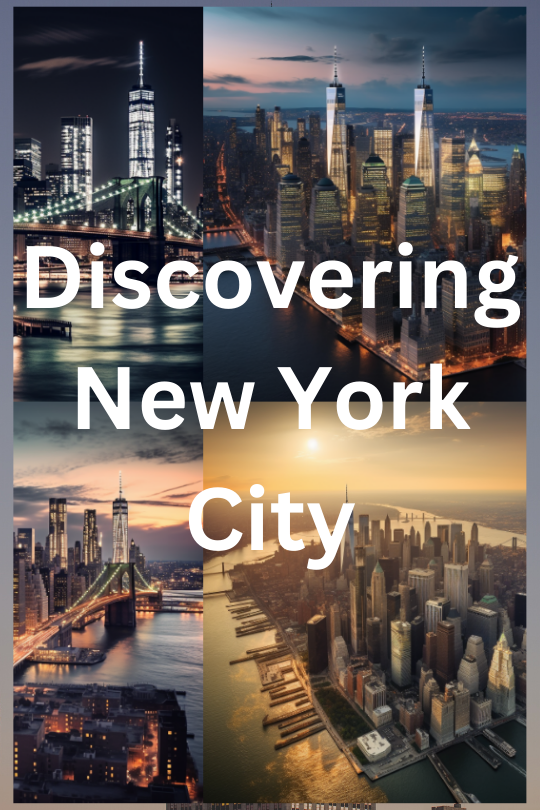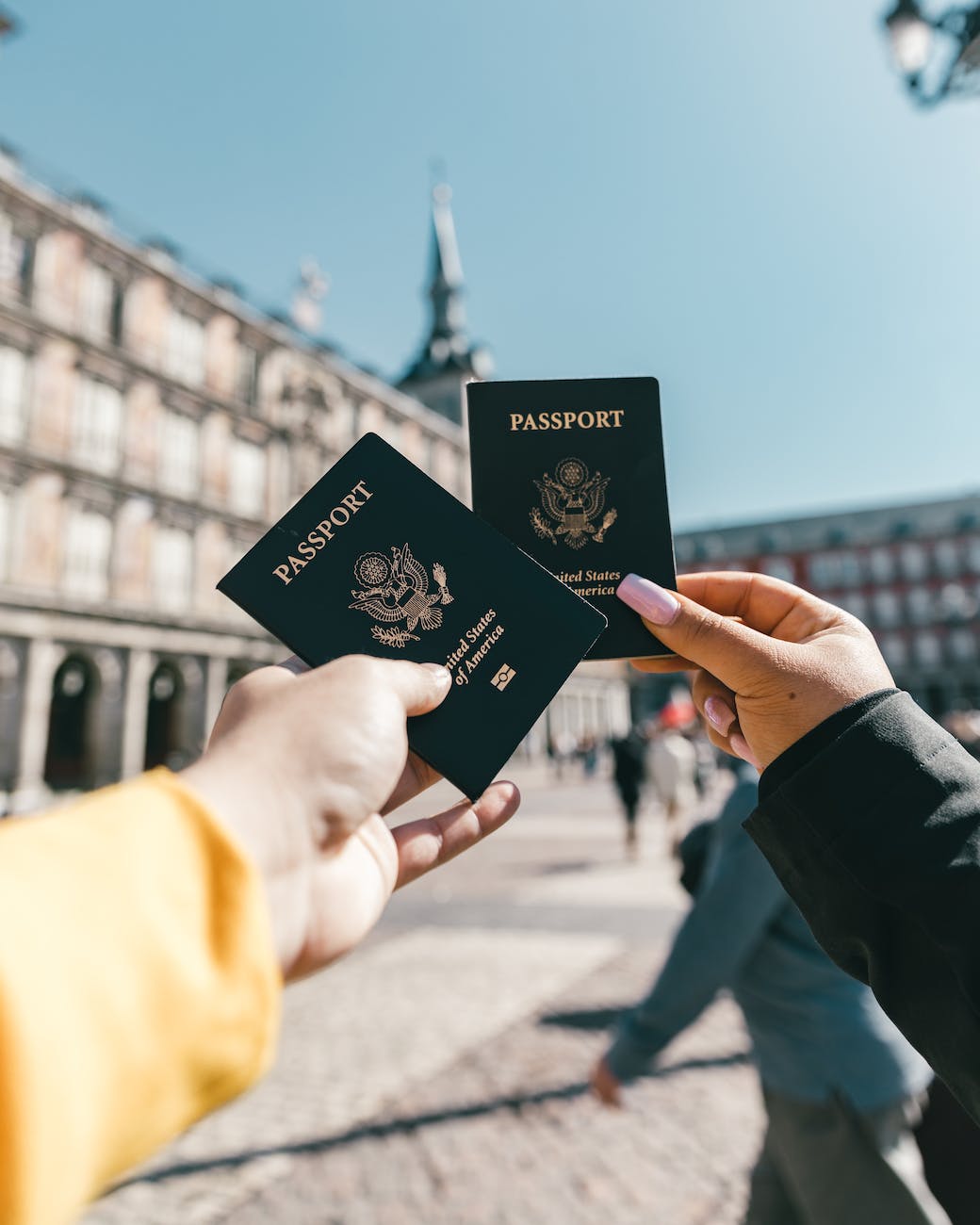New York City: 10 Must-Visit Places
***freeDIGIBOOK***IL Nido Palawan: Discovering Paradise
Chapter 1: The Iconic Statue of Liberty
The history and significance of the Statue of Liberty
How to visit the statue and what to expect
Best times to visit and tips for a great experience.
The Statue of Liberty is a symbol of freedom and democracy that has stood in New York Harbor since its dedication in 1886. The statue was a gift from France to the United States in recognition of the friendship between the two nations and the United States’ commitment to democracy.
The statue is a representation of the Roman goddess Libertas, holding a torch in one hand and a tablet in the other inscribed with the date of the U.S. Declaration of Independence. Standing at 151 feet tall, it is one of the largest statues in the world.
Visiting the Statue of Liberty is a must for any trip to New York City. Visitors can take a ferry to Liberty Island, where the statue is located, and explore the museum inside the pedestal of the statue. From there, visitors can take an elevator or climb the stairs to the crown of the statue for stunning views of the city.
To get the best experience, it’s recommended to visit the Statue of Liberty early in the morning or later in the afternoon to avoid crowds. The ferry ride itself is also a great opportunity for photos of the statue and the skyline.
Other tips for a great experience include wearing comfortable shoes, bringing sunscreen and water, and being prepared for security screening. Visitors should also be aware that access to the crown is limited and requires a separate ticket and reservation.
Overall, the Statue of Liberty is a must-see attraction in New York City that offers both historical significance and stunning views of the city.
Chapter 2: Exploring Central Park
The layout of the park and its various attractions
Popular activities to do in the park, such as bike riding and horse carriage tours
Hidden gems and lesser-known spots in the park
Central Park is a massive urban park located in the heart of Manhattan, spanning over 800 acres. It’s a popular destination for both tourists and locals alike, offering a wide variety of attractions and activities.
The park is divided into several sections, each with its own unique features and attractions. The southern end of the park includes landmarks like the Central Park Zoo and the Wollman Rink, while the northern end is home to the Conservatory Garden and the Harlem Meer.
One of the most popular activities in Central Park is bike riding. The park has several bike rental options, including Citi Bike stations and private rental companies. Another popular way to see the park is through a horse carriage tour, which can be booked in advance or found at designated pick-up areas throughout the park.
In addition to these activities, Central Park offers many hidden gems and lesser-known spots. For example, the park’s North Woods area is a serene and secluded area perfect for hiking and bird watching. The Shakespeare Garden is a beautiful spot for a picnic or quiet reading, while the Bethesda Terrace and Fountain offer stunning views of the park and the city skyline.
Other attractions in the park include the Central Park Conservatory, the Central Park Zoo, and the iconic Central Park Mall. With so much to see and do, Central Park is a must-visit destination for anyone visiting New York City.
Chapter 3: The World-Famous Empire State Building
The history of the Empire State Building
The observation deck and its breathtaking views
Special events and activities at the building
The Empire State Building is an iconic skyscraper located in Midtown Manhattan. It was completed in 1931 and was the tallest building in the world until 1970. Today, it remains one of the most recognizable landmarks in New York City.
The building’s history is steeped in both architectural and cultural significance. It was built during the Great Depression as a symbol of hope and progress for the city and the nation. The building’s Art Deco design is a testament to the period’s aesthetic and has since become an important part of New York City’s skyline.
Visitors can visit the Empire State Building’s observation deck, located on the 86th floor. From here, visitors can take in breathtaking views of the city and the surrounding areas. On clear days, visitors can see up to 80 miles away, including landmarks like the Statue of Liberty and Central Park.
Special events and activities at the Empire State Building include the annual lighting of the building in different colors to commemorate various events and holidays. The building also offers VIP tours and access to its famous spire.
The Empire State Building’s history and significance make it a must-see destination for anyone visiting New York City. Its observation deck offers some of the best views of the city, and its special events and activities make it an unforgettable experience.
Chapter 4: The Cultural Marvel that is the Metropolitan Museum of Art
The museum’s vast collection of art and artifacts
Popular exhibitions and events held at the museum
Tips for navigating the museum and getting the most out of your visit
The Metropolitan Museum of Art, also known as the Met, is one of the world’s largest and most comprehensive art museums. It was founded in 1870 and has since grown to include over 2 million works of art and artifacts from around the world.
The museum’s collection includes everything from ancient Egyptian artifacts to modern paintings and sculptures. Visitors can explore collections of European paintings, Islamic art, and African art, among others.
In addition to its vast collection, the Met also hosts a variety of temporary exhibitions and events throughout the year. These exhibitions cover a wide range of topics and often feature works by some of the world’s most renowned artists.
Navigating the Met can be overwhelming, but there are several tips to help visitors get the most out of their visit. One popular strategy is to focus on specific collections or exhibits rather than trying to see everything at once. The museum also offers free guided tours and audio guides for an additional fee.
Visitors should also be aware of the museum’s admission policy, which allows visitors to pay what they wish. However, there is a suggested admission fee, and visitors should be prepared to wait in line during peak hours.
Overall, the Metropolitan Museum of Art is a must-visit destination for anyone interested in art and culture. Its vast collection and exciting exhibitions make it a cultural marvel and a must-see destination in New York City.
Chapter 5: The Thriving Times Square
The history and development of Times Square
Popular attractions in the area, such as Broadway theaters and restaurants
Best times to visit and tips for avoiding crowds
Times Square is one of the most iconic and recognizable locations in New York City. It’s a bustling commercial and entertainment district located in the heart of Manhattan.
The area has a rich history dating back to the early 20th century when it was known as Longacre Square. The name was changed to Times Square in 1904 after The New York Times moved its headquarters to the area. Today, Times Square is known for its bright lights, billboards, and bustling crowds.
Popular attractions in the area include Broadway theaters, which offer some of the best live performances in the world. The area is also home to a wide variety of restaurants, from casual fast food to upscale dining options.
The best times to visit Times Square are during off-peak hours, as the area can become extremely crowded during peak tourist times. Late at night, the area is still busy but with a more subdued atmosphere.
Tips for avoiding crowds include visiting during the weekday or early in the morning. Visitors should also be aware of pickpockets and other scams that can occur in crowded areas.
Overall, Times Square is a must-visit destination in New York City, offering a unique and vibrant atmosphere that is unmatched anywhere else in the world. Visitors can enjoy live performances, delicious food, and stunning views of the city skyline.
Chapter 6: The Serene and Scenic Central Park Zoo
The different animals and exhibits at the zoo
Special events and activities at the zoo
Tips for visiting with children and families
The Central Park Zoo is a small, yet charming zoo located in the heart of Central Park. It’s a great place to spend a few hours and explore the different animal exhibits and activities.
The zoo is home to a variety of animals, including penguins, sea lions, snow leopards, and red pandas. The zoo’s exhibits are designed to provide visitors with a unique and immersive experience, including the Tisch Children’s Zoo, which allows children to interact with domestic animals like goats and sheep.
In addition to its regular exhibits, the Central Park Zoo also hosts a variety of special events and activities throughout the year. These events include animal feedings, educational programs, and seasonal events like the Zoo’s Boo Halloween celebration.
Visitors with children and families should be aware that the Central Park Zoo is a smaller zoo compared to other zoos in the area, but still offers a great experience for young children. The zoo’s Tisch Children’s Zoo is designed specifically for children and offers hands-on activities and interactions with animals. Families should also plan to visit the nearby Central Park playground, which is a popular destination for children.
Overall, the Central Park Zoo is a serene and scenic destination that offers visitors a unique and enjoyable experience. Visitors can explore the different animal exhibits and participate in special events and activities, making it a must-visit destination for families and animal lovers alike.
Chapter 7: The Reflective and Moving 9/11 Memorial and Museum
The significance and impact of the 9/11 attacks
The design and layout of the memorial and museum
Stories and exhibits honoring the victims and survivors.
The 9/11 Memorial and Museum is a place of reflection and remembrance located at the former site of the World Trade Center in Lower Manhattan. The memorial and museum were established to honor the victims of the September 11 attacks and to educate visitors about the impact of the tragedy.
The significance and impact of the 9/11 attacks cannot be overstated. The attacks claimed the lives of nearly 3,000 people and changed the course of American history. The memorial and museum are designed to honor the victims and survivors of the attacks and to provide a space for reflection and contemplation.
The design and layout of the memorial and museum are both striking and emotional. The memorial features two reflecting pools set in the footprints of the Twin Towers, surrounded by a plaza of trees and greenery. The museum features a collection of artifacts, exhibits, and stories that offer visitors a comprehensive understanding of the events of September 11, 2001.
The museum’s exhibits and stories are presented in a thoughtful and respectful way, honoring the victims and survivors of the attacks. Exhibits include artifacts recovered from the site, such as twisted steel beams and damaged fire trucks. Personal stories and testimonies from survivors and family members of victims are also presented, allowing visitors to connect with the human impact of the tragedy.
Overall, the 9/11 Memorial and Museum is a reflective and moving destination that provides visitors with an important opportunity to honor the victims of the attacks and to reflect on the impact of the tragedy. It is a must-visit destination for anyone seeking to understand the events of September 11, 2001, and to pay their respects to those who lost their lives.
Chapter 8: The Cultural Melting Pot of Chinatown
The history and culture of Chinatown
Popular restaurants and shops in the area
Tips for exploring the neighborhood and trying new foods.
Chinatown is a vibrant and culturally rich neighborhood located in Lower Manhattan. It’s a must-visit destination for anyone interested in exploring the cultural diversity of New York City.
The history of Chinatown dates back to the mid-19th century when Chinese immigrants began to settle in the area. Today, Chinatown is a bustling neighborhood filled with shops, restaurants, and cultural attractions.
One of the most popular attractions in Chinatown is the food. The neighborhood is home to a wide variety of restaurants offering authentic Chinese cuisine, from traditional dim sum to Cantonese-style seafood. Some popular restaurants in the area include Jing Fong, Nom Wah Tea Parlor, and Wo Hop.
In addition to food, Chinatown is also known for its shopping. The neighborhood is home to a variety of shops selling everything from Chinese herbs and teas to souvenirs and trinkets.
When exploring Chinatown, visitors should be sure to check out the Mahayana Buddhist Temple, which is one of the largest Buddhist temples in the city. Visitors should also consider taking a walking tour of the neighborhood to learn more about its history and culture.
Tips for exploring Chinatown include trying new foods and being open to new experiences. Visitors should also be aware that the neighborhood can be crowded and busy, especially during peak tourist times.
Overall, Chinatown is a cultural melting pot that offers visitors a unique and authentic experience. Its rich history and cultural attractions, combined with its delicious food and shopping, make it a must-visit destination in New York City.
Chapter 9: The Magnificent Grand Central Terminal
The history and architecture of Grand Central Terminal
Popular activities to do in the terminal, such as shopping and dining
Hidden gems and lesser-known spots in the terminal
Grand Central Terminal is an iconic transportation hub located in Midtown Manhattan. It’s a must-visit destination for anyone interested in architecture, history, and transportation.
The history of Grand Central Terminal dates back to the early 20th century when the original Grand Central Station was demolished and replaced with the current terminal. The terminal’s architecture is a stunning example of Beaux-Arts design, featuring a grand concourse with a vaulted ceiling and marble floors.
Today, Grand Central Terminal is not only a transportation hub but also a popular destination for shopping and dining. The terminal is home to a variety of shops, including the famous Grand Central Market, which offers gourmet food and specialty items. The terminal’s dining options include everything from casual cafes to upscale restaurants.
Visitors to Grand Central Terminal can also explore the terminal’s hidden gems and lesser-known spots. The Whispering Gallery is a famous feature of the terminal, located in the archway outside the Oyster Bar. Here, visitors can whisper into one corner of the archway and be heard by someone standing in the opposite corner.
Other hidden gems in the terminal include the Campbell Apartment, a former private office that has been converted into a bar, and the Tiffany Clock, a stunning clock located above the terminal’s main information booth.
Overall, Grand Central Terminal is a magnificent destination that offers visitors a unique blend of history, architecture, and modern amenities. Its shopping and dining options, combined with its hidden gems and lesser-known spots, make it a must-visit destination in New York City.
Chapter 10: The Unique and Artistic Brooklyn Bridge
The history and design of the Brooklyn Bridge
Walking across the bridge and enjoying the views
Tips for exploring the surrounding neighborhoods, such as DUMBO and Brooklyn Heights.
The Brooklyn Bridge is an iconic suspension bridge that connects the boroughs of Manhattan and Brooklyn. It was completed in 1883 and was the longest suspension bridge in the world at the time.
The design of the Brooklyn Bridge is both unique and artistic. Its Gothic arches and intricate cable patterns make it a stunning example of 19th-century engineering and architecture.
One of the best ways to experience the Brooklyn Bridge is by walking across it. The pedestrian walkway offers breathtaking views of the Manhattan skyline and the East River. Visitors can also explore the bridge’s history and design by visiting the Brooklyn Bridge Museum, located on the Brooklyn side of the bridge.
In addition to the bridge itself, the surrounding neighborhoods offer a variety of attractions and activities. DUMBO (Down Under the Manhattan Bridge Overpass) is a trendy neighborhood known for its art galleries and specialty shops. Brooklyn Heights is another neighborhood worth exploring, with its stunning brownstones and historic homes.
Tips for exploring the surrounding neighborhoods include taking a stroll along the Brooklyn Heights Promenade, which offers stunning views of the Manhattan skyline, and visiting the Jane’s Carousel in DUMBO, a restored 1922 carousel located in a glass pavilion.
Overall, the Brooklyn Bridge is a unique and artistic destination that offers visitors a chance to experience both history and modernity. Walking across the bridge and exploring the surrounding neighborhoods is a must-do activity for anyone visiting New York City.
New York City is a city filled with diverse and exciting destinations, from iconic landmarks like the Statue of Liberty and Empire State Building to cultural attractions like the Metropolitan Museum of Art and the 9/11 Memorial and Museum. Discovering New York City, Visitors can explore the city’s bustling commercial and entertainment districts, such as Times Square and Chinatown, or relax in the serene green spaces of Central Park. The city’s rich history and architectural wonders can be seen in destinations like Grand Central Terminal and the Brooklyn Bridge. With so many places to visit and experiences to be had, New York City is truly a world-class destination that offers something for everyone.





https://DreamProxies.com – 100 the best private proxies with big savings + Very fast proxy serrvers!
Teen Girls Pussy Pics. Hot gallerieshttp://brow.brow.adablog69.com/?alize josie and the pussycat porn list offree porn sites danger dave pree porn free jpg porn down loadds leonardo dicaprio porn
u95ihy